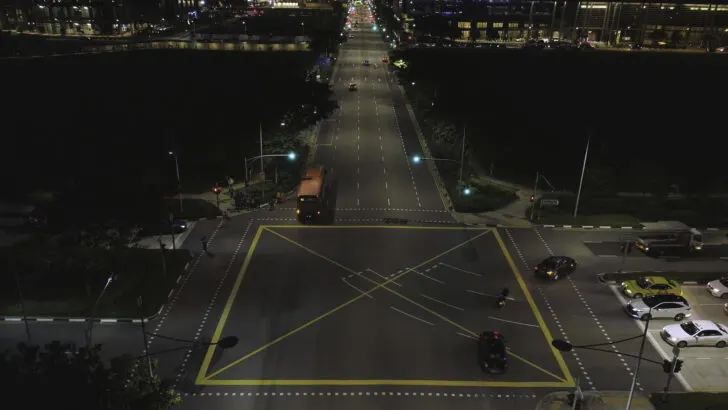In many cities, both large and small, drivers may encounter an area known as a blind intersection. In some cases, this will be marked by signs well in advance, but in others, it can appear somewhat without much warning!
A blind intersection is a road junction or intersection with limited visibility due to obstructions like buildings, parked vehicles, or vegetation. Extra caution is required by drivers and pedestrians to navigate safely through these intersections and reduce the risk of accidents.
This obstruction can be due to factors such as buildings, parked vehicles, vegetation, or other physical obstructions, which limit visibility and increase the risk of accidents.
Keep reading to learn more about how to navigate a blind intersection safely!
Table of Contents
How to Drive Through a Blind Intersection
Blind intersections can potentially be a dangerous place for drivers to navigate through, but with some general common sense and a little bit of practice, you will soon be passing through blind intersections in a safe and controlled manner.
Most DMV guidebooks will recommend that drivers slow to a speed of 20 MPH.
This will ensure you can stop quickly in case a vehicle is coming from either the left or the right and you notice it after you already start moving into the intersection.
In almost all cases with an uncontrolled intersection, you should come to a complete stop before making the crossing over the road. This gives you plenty of time to not only look for approaching vehicles but also to check for bicycles and pedestrians too.
Before moving forward, the DMV driver’s guide recommends you look left first, then look right. After that, you should look left a second time, then move forward and cross the intersection.
Don’t be afraid to move slowly toward the intersection until you are able to see far enough down the left and right sides to make a safe crossing.

Controlled and Uncontrolled Intersections
Intersections will be either controlled or uncontrolled. These terms are used to distinguish between intersections that may have no identification or only minor stripes on the road to intersections with signage or traffic lights.
A controlled intersection will have plenty of identification and guidance.
This can be in the form of signs alerting you to the presence of an intersection well before you approach it, painted lines showing you where you should stop, and signs or lights that let you know when it is safe for you to make a crossing.
An uncontrolled intersection may have a sign somewhat before the intersection letting you know it’s coming up and to be prepared to stop or yield, but may not have any signs at the intersection itself.
Uncontrolled intersections will never have traffic lights either but may have some painted lines on the road to help guide drivers along.
Blind Intersection Signs and Signals
While the most affordable identification a city can provide a blind intersection would be painted words or directional arrows on the roadway, signs alongside the road itself can also be a huge help in warning motorists that an intersection is ahead.
While these won’t help you determine who has the right of way in the intersection, such as a traffic light, signs, and painted marks can give you enough of a heads-up notice on what to expect.
This is especially useful for newer drivers that may be experiencing blind intersections for the first time.
In normal intersections, traffic lights are common and extremely helpful. They will direct traffic and let you clearly know when it’s safe for you to move across the intersection.
Traffic lights, however, are extremely large and require additional infrastructure at the intersection, which smaller towns and cities may not be able or willing to invest in.
Who Has The Right of Way in a Blind Intersection?
Navigating through a blind intersection would be similar to how you would approach a normal four-way stop intersection, whether it is blind or not.
The generally accepted rule of thumb, and one that the DMV suggests as law, would be to go in a counter-clockwise direction around the stop and let each person go through the intersection in that order.
Additionally, another accepted way to get through a blind intersection, as well as a standard four-way stop, would be whoever arrived first has the right of way.
For example, if you and another vehicle are pulling up to the intersection from opposite directions, and you make it to the line first, you would have the right of way in crossing the intersection first.
However, before crossing or making your turn, always be sure to check for pedestrians, bicycles, and other traffic.
Blind intersections make seeing oncoming traffic somewhat difficult, so always take the time to look both ways thoroughly and be prepared to stop in case a vehicle is coming that might not respect the road laws.
If you found this article helpful, make sure to take a look at some of my other related articles below!
